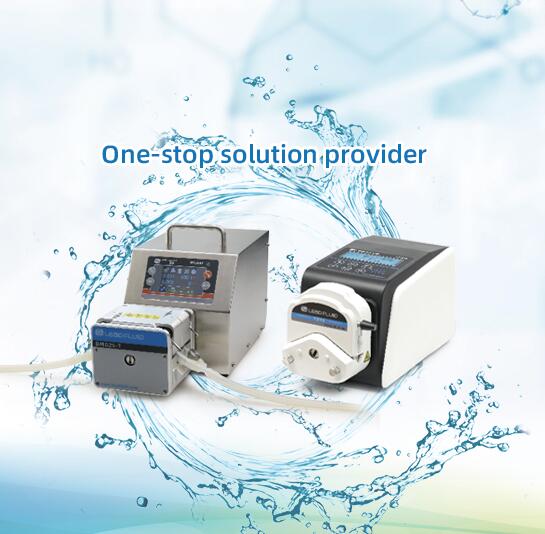In the fields of pharmaceuticals, laboratories, beauty and cosmetics, peristaltic pumps are often used for liquid dispensing or filling. The use of peristaltic pumps has an advantage, that is, it has the ability to self-prime. Some users use peristaltic pumps and feel that they are similar to the usual water pumps. In fact, the two are different equipment. Some new users are not very familiar with these aspects. Today, Lead Fluid will explain to you what is the peristaltic pump, water pump and what is the difference.
What is a peristaltic pump?
Peristaltic pump, also known as tubing pump, is a new type of industrial pump. The peristaltic pump consists of three parts: peristaltic pump driver, pump head and peristaltic pump tubing.
Just as the repeated contraction and relaxation of muscles can make blood flow in the blood vessels, the peristaltic pump relies on the pumping efficiency of several rollers to alternately squeeze/release along an elastic tube. The squeezed fluid in the tube produces flow output, and when the pressure disappears, when the tube relies on its own elasticity to return to its original shape, the volume increases, a vacuum is generated, and the fluid is sucked in.
The peristaltic pump pumps fluid by alternately squeezing and releasing the elastic delivery tubing of the pump. Just like pinching a tubing with two fingers, as the fingers move, negative pressure is formed in the tube, and the liquid flows along with it. A peristaltic pump is a section of the pump tube between two rollers that forms a “pillow”-shaped fluid. The volume of the “pillow” depends on the inner diameter of the pump tube and the geometric characteristics of the rotor. The flow rate depends on the product of the three parameters: the speed of the pump head, the size of the “pillow”, and the number of “pillows” produced per revolution of the rotor. The size of the “pillow” is generally constant (except when pumping particularly viscous fluids). Compared with a pump with the same rotor diameter, a pump with a larger “pillow” volume has a larger volume of fluid delivered per revolution of the rotor, but also a larger degree of pulsation. This is similar to the case of membrane valves. For pumps that produce a smaller “pillow” volume, the volume of fluid delivered by the rotor per revolution is also smaller; moreover, the small “pillow” formed quickly and continuously makes the fluid flow more stable.
Water pumps, including centrifugal pumps, slurry pumps, clean water pumps, chemical pumps and so on. A peristaltic pump can be regarded as a kind of water pump, it is a device used to transfer precision fluid, and the working principle of the peristaltic pump is also different.
The difference between water pump and peristaltic pump, the usage scenarios are different. If you need to fill a pool or irrigate a large cubic storage tank, all pumps are used, and their main application is efficiency.
And peristaltic pumps, such as laboratory, pharmaceutical, medical peristaltic pumps, etc., are for small flow and precise transmission, which mainly uses accuracy.
